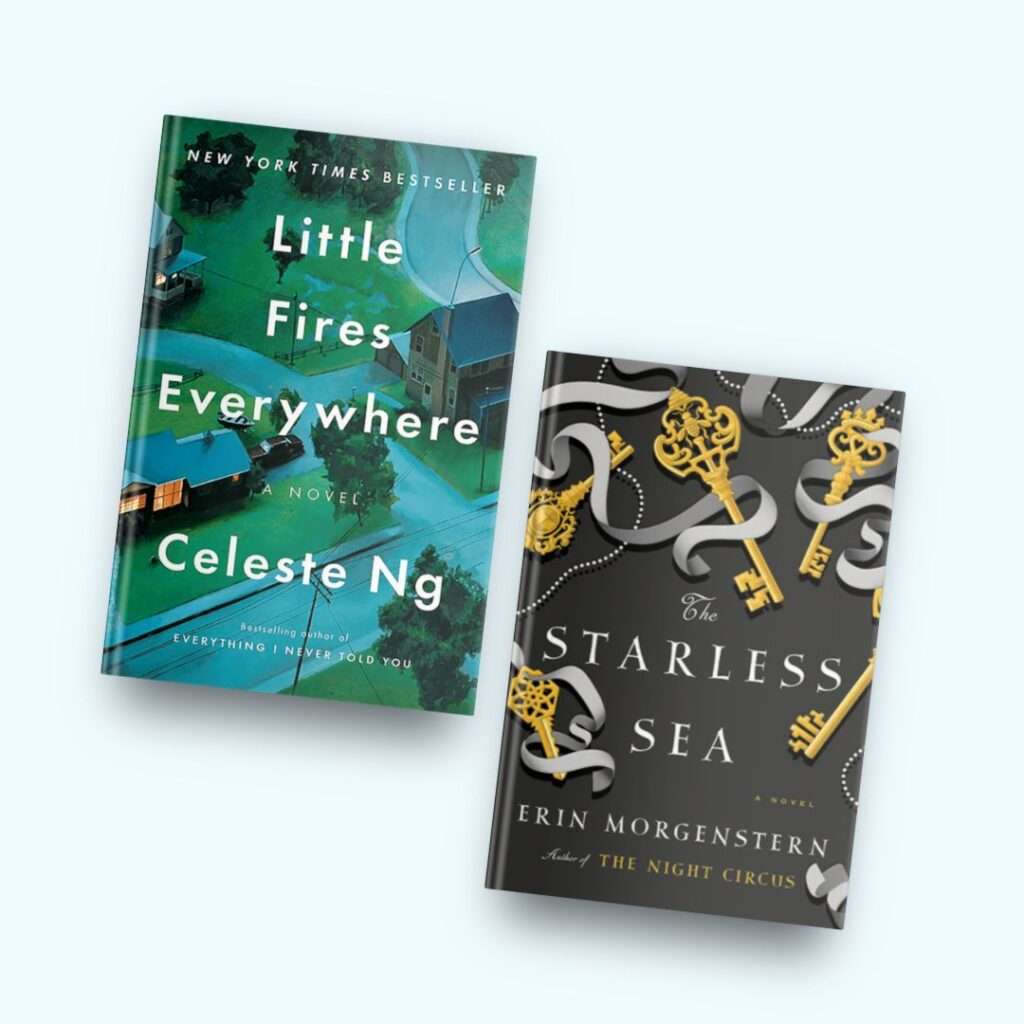Table of Contents
- Introduction
- The Art of Book Cover Conceptualization
- The Intersection of Artistic Vision and Market Appeal
- Collaborative Decision-making Process
- Evolution of Book Covers
- Collaboration: The Art of Book Cover Success
- Conclusion
Introduction
A book’s cover serves as the first impression for potential readers, capturing their attention and setting expectations for the pages inside. An eye-catching, thoughtful design can draw readers in, while a bland or confusing cover may cause them to pass by. As such, the significance of a well-conceived cover that aligns with the book’s tone and content cannot be overstated when making that vital initial connection with readers.
Beyond aesthetics, a book cover can also directly influence sales and the book’s overall success. Readers do judge books by their covers, whether consciously or not, and the cover plays a pivotal role in a book’s discoverability on shelves and online. The choices made in the cover design process, from typography to color palette to any graphic elements, all shape the consumer response and the ability to stand out in a crowded marketplace.
Consequently, the cover’s capacity to pique interest and resonate with target readers weighs heavily in determining the book’s commercial performance. Therefore, carefully considering artistic and strategic cover choices is crucial for giving a book the best chance to thrive.
The Art of Book Cover Conceptualization
Book cover conceptualization begins with tapping into the creative process to capture the true essence and spirit of the book. Designers typically start by reading the manuscript or having extensive storyboarding sessions with the author and editor to immerse themselves in the book’s world and characters. This allows them to start brainstorming cover concepts that align with the book’s themes, moods, and visual identity.
Mood boards with images, textures, typography, and color palettes are vital to bringing the conceptual vision to life. These collages of visual inspiration help designers hone in on the atmosphere, emotions, and aesthetics that embody the story’s heart. The goal is to envisage the cover’s appearance before executing any designs.
The Spark of Originality
While adhering to genre conventions and market expectations is important, truly iconic covers often feature an element of novelty that captures attention. Clever visual metaphors, bold use of colors and fonts, and unexpected compositions can spark intrigue and get readers to pick up the book for a closer look. The most creative covers find a way to visually interpret the essence of the story in an original way that resonates with readers.
Reflecting on the Book Content
At its core, the purpose of a book cover is to provide a window into the pages within. The imagery, typography, colors, and overall style should give readers a taste of the experience that awaits them inside in an evocative way. While the cover acts as packaging to catch the browser’s eye, its ultimate measure of success is how accurately and artfully it conveys the book’s spirit.
The most compelling covers find that sweet spot between mainstream appeal for the target audience and breaking new ground in capturing the book’s essence through creative artistry. They balance convention with innovation and commercial viability with artistic vision to reflect the book’s soul outwards into the world.
The Intersection of Artistic Vision and Market Appeal
Creating an eye-catching and compelling book cover requires striking a delicate balance between artistic expression and commercial viability. Designers must walk this tightrope, fusing their creative vision with an understanding of market expectations and reader preferences. When executed successfully, these book covers leap off the shelves, simultaneously showcasing the designer’s talent and boosting sales.
The Tension Between Creativity and Commerce
Designers often feel tugged in two directions during the cover creation process. On one hand, they aim to craft iconographic images that capture the book’s essence. This allows for experimentation with color palettes, fonts, and graphical layouts. However, designers must also ensure their concepts have mass appeal and align with reader expectations for certain genres. For instance, adherence to common tropes may boost commercial success in romance or mystery covers, while more avant-garde designs could alienate genre fans. Navigating these competing priorities is key.
Noteworthy Successes in Bridging the Divide
Some recent examples showcase designers successfully fusing innovation and marketability. The cover for Celeste Ng’s smash hit Little Fires Everywhere features a neighborhood street ablaze, a bold design that sparked intrigue while remaining accessible. Alternatively, the intricate floral design adorning Erin Morgenstern’s fantasy novel The Starless Sea leaned into more stylized aesthetics while still signaling the book’s genre. Data showed the cover drove interest and sales thanks to this skillful fusion of creativity and familiarity. Through balancing priorities on individual titles, artists craft covers that sell without sacrificing their vision.

Key Ingredients for Striking the Balance
How can designers consistently bridge this gap? First, conducting market research establishes clear genre conventions and reader perspectives. Designers can then craft elevated riffs on expected themes. Secondly, A/B testing alternate covers provide data on response, allowing artists to tweak approaches to optimize appeal. Finally, collaborating across teams ensures artistic risk-taking is counterbalanced with commercial considerations. By blending these ingredients, cover designers can have and eat their cake, too—fashioning beautiful jackets that fly off shelves.
Collaborative Decision-making Process
Creating a compelling book cover requires collaboration between different teams, each bringing unique expertise and perspectives. The editorial team focuses on how the cover conveys the essence of the book’s themes, characters, and storyline. Meanwhile, the sales and marketing teams analyze factors like genre conventions, color psychology, and visual trends to determine what will grab consumer attention in a crowded marketplace.
Balancing Artistic Vision and Commercial Viability
There can often be creative tensions between these different priorities. The editorial team may envision a more subtle, nuanced cover that hints at complex ideas in the book. But the sales team knows that at the glance of consumers giving a book, subtleties don’t always translate. So begins a collaborative back-and-forth to find the right balance between artistic expression and commercial appeal.
Unifying Around a Shared Vision
Successful collaboration requires teams to listen to each other’s expertise. Designers explain their vision but also incorporate helpful feedback from other stakeholders. Likewise, sales teams ground their recommendations in consumer data, inviting designers into that decision-making process. This builds understanding on both sides.
When teams unite around a shared vision, each player’s priorities and contributions unite organically. The result is a compelling book cover that balances artistry, essence, and visibility – crucial for grabbing the reader’s attention in a competitive landscape.
Evolution of Book Covers
One of the most fascinating aspects of book cover design is seeing the iterations and changes a cover goes through before reaching bookshelves. In many cases, initial cover concepts get altered significantly or scrapped entirely during the design process. Examining real-world examples provides insight into the reasoning and influencing factors behind these cover transformations.
Becoming by Michelle Obama
The original cover concept for Michelle Obama’s smash hit memoir featured a more serious black-and-white photo of her. But the final version swapped this out for a warmer, more inviting color portrait showing her smiling—an uplifting image that better conveyed the inspirational tone of the book. This change aligned well with reader expectations.

Where the Crawdads Sing by Delia Owens
Where the Crawdads Sing originally had a cover with a woman walking through marshlands. However, feedback highlighted the need for something more emblematic of the natural landscape central to the novel’s plot. The final cover features alluring hand-drawn illustrations of feathers, shells, and fireflies—better encapsulating the book’s essence and intrigue.
As these examples show, impactful covers often go through multiple idea phases, with publishers paying close attention to target audience perspectives. The end goal is for the cover to capture a book’s soul and make it irresistible for readers to pick up off the shelf.
Collaboration: The Art of Book Cover Success
When it comes to creating a successful book cover, many voices weigh in. Authors, designers, publishers, marketers, and booksellers all have a stake in ensuring a cover effectively represents the book inside and captures readers’ attention.
Many authors strongly envision what they want to see on the cover. However, they also understand publishers’ expertise regarding design trends and market data.
Skilled designers have an instinct for what will catch the consumer’s eye. They stay on top of trends in photography, color palettes, fonts, and layouts to incorporate appealing visual elements.
Marketers contribute valuable consumer insights. But striking covers also take creative risks rather than relying solely on proven formulas. Meanwhile, retail buyers provide feedback on cover designs based on years of observing store consumer behavior. Their unique vantage point helps fine-tune covers to capture attention.
Evolving Preferences
While striking covers have always been critical in the publishing business, preferences continue to shift with changing technologies, genres, and consumer tastes. In recent years, minimalist designs with bold typography have gained popularity, reflecting a desire for simplicity and sophistication. This can be seen in covers like The Subtle Art of Not Giving a F*ck by Mark Manson or Educated by Tara Westover.
Additionally, covers incorporating vibrant colors or unique textures have become eye-catching in a crowded marketplace. Examples include the cover of Circe by Madeline Miller, which features a mesmerizing illustration with gold foil accents, and The Immortalists by Chloe Benjamin, which has a textured, embossed design.
Furthermore, covers that convey a sense of nostalgia or vintage aesthetics have also gained traction. This can be seen in books like The Great Gatsby by F. Scott Fitzgerald and The Seven Husbands of Evelyn Hugo by Taylor Jenkins Reid, featuring deco-inspired designs.
Ultimately, successful book covers are a collaborative effort that considers the author’s vision, market trends, and consumer preferences. A well-designed cover can be crucial to a book’s success by capturing the essence and enticing readers.
Conclusion
The art of book cover is a dance between creative ambition and strategic marketing savvy. It necessitates a deep understanding of the book’s narrative soul and an acute awareness of the visual zeitgeist and consumer preferences. As seen in case studies like The Goldfinch, Becoming, and Where the Crawdads Sing, a cover that can skillfully meld symbol, color, and typography to encapsulate the essence while appealing to readers’ sensibilities stands to not only draw eyes but also anchor itself in the collective consciousness of its audience.
The process is inherently collaborative, bringing together the hearts and minds of authors, designers, publishers, and marketers, each a guardian of a different facet of the book’s journey to the reader. The best covers arise not from a single vision but from a synergy of perspectives, blending the artistic with the commercial in an alchemical act that is both a science and an art.
Emerging technologies and shifts in cultural tastes will continue to influence the art of book cover design. Nonetheless, the fundamental purpose remains: to forge an immediate, visceral connection with potential readers. As the literary landscape evolves and the competition for attention intensifies, the cover’s role as a silent ambassador for the story within only becomes more vital. The artistry of a book cover endures as a testament to the story it enshrines, fulfilling the ultimate ambition of metamorphosing browsers into readers and readers into the story’s next chapter—its advocates and champions.

1 thought on “The Art of Book Cover”